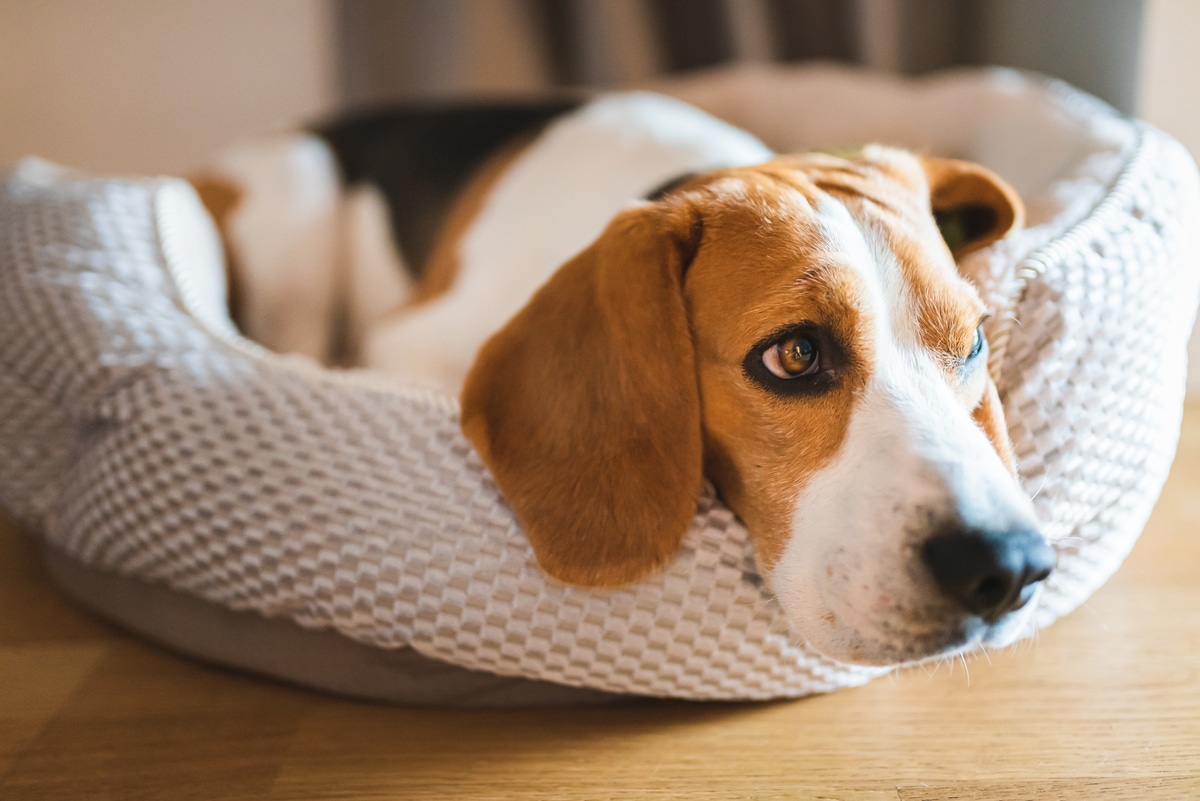Great Danes and Chihuahuas, puppies and elderly dogs, all have varied demands once it concerns dog beds, therefore there is no such thing as a one-size-fits-all solution. You’ll need to know your dog’s age and weight in order to choose the ideal dog bed. More specific information, such as how they sleep, whether or not they get overheated, whether or not they chew things, whether or not they urinate when they’re scared, or whether or not they bring muck into the home, is required. You’ll also want to take into account how much time your dog spends sleeping when deciding on a mattress, just like you would if you were purchasing one for yourself.
In addition to sleeping, your dog spends a lot of time in his or her bed. It’s a safe haven where they may relax and recharge their batteries. However, in order to choose the proper one for your pup’s requirements, you must first do thorough study to identify those requirements. Your dog’s breed and age should be taken into account while choosing a bed for him.
When looking for a dog bed, begin by determining the size of your pet first. It is recommended that you take measurements from the tip of the snout to the end of the tail. Add a few inches towards that size and choose a somewhat larger bed, which will offer your dog more area to sprawl around. When it comes to dog beds, there are so many possibilities that you may need some assistance narrowing down your choices.
How much time do dogs spend sleeping?
Depending on the breed and age of the dog, the quantity of sleep they need might vary greatly. Sleeping habits of dogs vary widely; they are estimated to snooze around 10-12 hours a night on average, which is more than double that of the typical person. Puppies sleep even more, averaging over 18 hours per day every day. Some people refer to large breeds as “mat dogs” because of their tendency to slumber for long periods of time.
There’s still plenty of time to laze about while sleeping for half the day. Dogs spend just 20% of their waking hours moving about; the other 80% is spent laying down and relaxing. Physical activity has the potential to distort rest and sleep patterns even more. Short walks may get a dog from out action for up to two hours at the most.
Size of your pet
Once you’ve made the decision to purchase one, the following step is to take your dog’s measurements from top to bottom. If you do this, you’ll avoid getting a mattress that is really too little for your friende.
Dog mattresses come in many shapes and sizes, so it’s important to know which one is best for your pet and which one isn’t. Measure your dog from snout to rump when they’re fast sleeping. When shopping for a dog bed, add 8–10 inches to the predicted output and use it as a guide. You may use the typical length of a puppy’s breed as a guide to determine the appropriate size of the puppy’s bed. Then, if the bed is too huge, bring in some blankets or extra pillows to keep them warm and cozy.
Your dog should be able to lay down in a comfortable posture while using a dog bed that is large enough. When they’re rolled up, the bed seems to be in good condition. But then if your dog just wants to lay back and relax?
Sturdiness
Chewing is a common pastime for many dogs. In puppies, it may be a way to alleviate the discomfort of teething. To maintain their teeth clean and their jaws strong, older dogs may engage in this habit. Or maybe he’s just hungry, anxious, or bored. In terms of bedding, though, chewing might be a problem. Furthermore, if a piece they’re chewing gets lodged in the stomach lining, it might be harmful.
Fabric beds with foam components or other padding may not be the ideal option if your pet is a chewer. A canvas-like fabric-covered bed made of PVC pipe or aluminum may be a preferable choice for “gnawy” canines. In addition, most of these mattresses include high footboards or other support systems. If your dog is large or has a thick coat and tends to get overheated easily, this may be an excellent option for them even if they do not really chew. Consider how easy it will be to clean your new home. It’s inevitable that your puppy’s bedding will need to be replaced at some point. That includes cot-like beds and machine washable alternatives, especially those with a washable cover.
Types of Dog Mattresses
Dogs sleep between 12 and 14 hours a day on average. For anybody, that’s a long time to be stuck there. When looking for an appropriate bed for your pet, you can just observe their habits. Do they regularly change their sleeping positions? To cuddle up, or to spread out in all their glory? Much more goes into deciding on a mattress than just picking a fabric and sizing. Your dog’s individual demands and age should guide you in your search for a long-lasting bed. Dog beds come in a variety of styles, including:
Beds with mattress pads
Because of its rectangular design, these mattresses are a popular option for couples who want to be able to move about and change positions. Transporting and storing them is also a breeze.
Beds for the disabled
Memory foam is used in the construction of these beds, which give comfort and support for arthritic joints and bones in older dogs.
Doughnut beds
Dogs that like cuddling will appreciate the softness and coziness of these round beds. They’re especially great for puppies or many tiny dogs that prefer to lie in a pile. Because they’re generally made of soft, fluffy material, take careful to check that it will hold up before you invest in one.
Beds in a cave or tent
If your dog is prone to anxiety or is easily chilled, one of these beds may be ideal for them. They keep a dog’s body warm and secure, which is important to a dog that appreciates solitude.
A dog’s nighttime routine
Regardless of how long their body may be, each dog has a unique manner of sleeping, as we saw in our demonstration. A dog bed without any of the extra 8–10 inches of flexibility would be preferable if your dog prefers to cuddle up when they sleep. Consider how hot or chilly your dog could be at night based on their sleeping posture. Decide if you like a chilly or warm mattress. You may want to choose a less costly bed, or a mattress built of a durable material, if your dog has a habit of chewing on items.











